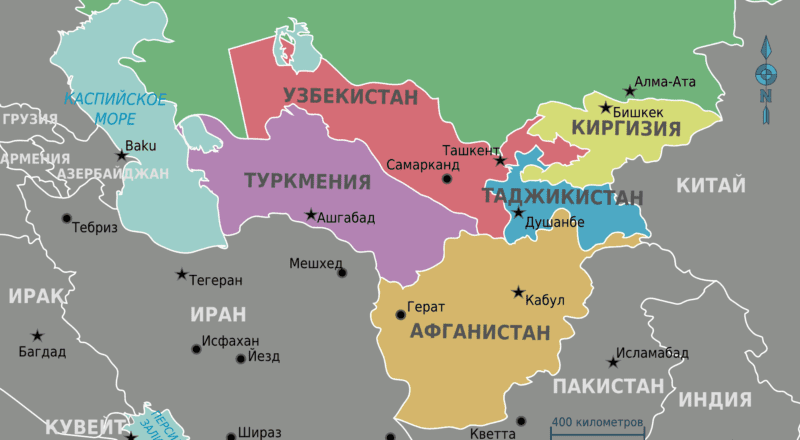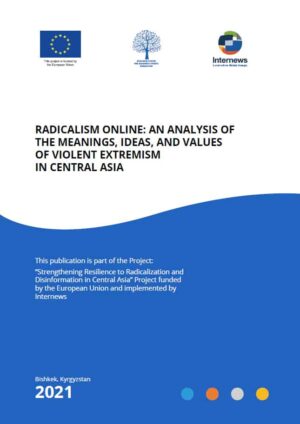In an effort to help prevent violent extremism in Central Asia, the Research Centre for Religious Studies of Kyrgyzstan conducted an analysis of values, narratives, and online messages created and distributed by banned extremist groups in five countries: Kazakhstan, Kyrgyzstan, Tajikistan, Turkmenistan, and Uzbekistan.
The study included over 1.6 million messages containing religious rhetoric and provides insight into the meanings of the messages and the channels for dissemination, as well as the impact of the messages on the target audience. This was followed by a field study of 4,005 respondents in the 18-35 age range. In addition, the survey also sought to identify the media preferences of young people in the region. (Excluding Turkmenistan which was not included in the field study due to the travel restrictions imposed by the state during the COVID-19 pandemic.)
Using the findings, the Centre developed communication strategies for each country that recommended how media, NGOs, state authorities, and religious leaders could, with a focus on young people, contribute to promoting peace.
Key findings
- Although less than 1% of the analyzed messages containing religious rhetoric had what would be considered dangerous content, those particular messages often resonated with users’ values and interests, especially young people.
- The messages promoting violence used specific, complex terms that were geared to people who were already followers of radical ideas rather than the average user. The intent of the messages was to deepen the commitment of followers rather than recruit new followers.
- Administrators of violent extremist channels have developed multi-channel access strategies for potential recipients (through various platforms, chat rooms, personal messages, and reposts), thwarting the blocking measures used by Central Asian governments.
- The messaging by extremist groups promotes: purity of faith, mutual support to fellow believers, fighting against infidels and apostates, rejection of secular power and its decisions, ambition to create a caliphate, and anti-Semitism.
- The main target audience of distributors of extremist content is young people aged 18-30 who are dissatisfied with the current political environment and who share a strong sense of injustice. Those aged 18-21 showing the strongest support for the influence of religion on politics. Level of education is also a risk factor: young people with less education tend to engage more with the content.
Summary of recommendations
- Rather than try to directly counter extremist propaganda, national and regional media’s role should be to create a positive information space, expose conspiracy theories, and build credibility as a source of trusted information.
- Strengthen the communication strategies of local governments and organizations providing serves to the community (particularly young people) to provide an alternative source of information to extremist messaging.
Communication Strategies by Country (English)
- Kazakhstan Communication Strategies
- Kyrgyzstan Communication Strategies
- Tajikistan Communication Strategies
- Turkmenistan Communication Strategies
- Uzbekistan Communication Strategies
Communication Strategies by Country (Russian)
- Коммуникационная стратегия: Казахстан
- Коммуникационная стратегия: Кыргызстан
- Коммуникационная стратегия: Таджикистан
- Коммуникационная стратегия: Туркменистан
- Коммуникационная стратегия: Узбекистан
The research was conducted as part of the Strengthening Resilience to Radicalisation and Disinformation in Central Asia through Independent Media project funded by the European Union and implemented by Internews.


